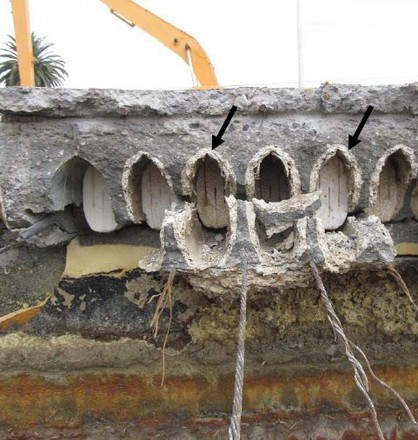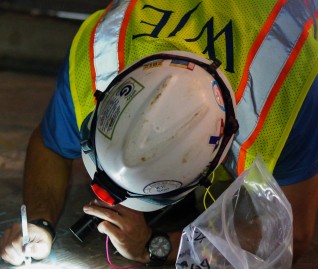
Biogenic sulfuric acid attack (BSA) is probably the most common and most severe biodegradation mechanism affecting concrete. BSA deterioration is generally manifested as exfoliated surface loss with aggregate exposed, discoloration, and progressively altered zones with varying composition and texture in the existing concrete.
In this article, concrete experts Hugh Hou, Kimberly Steiner, John Fraczek, and Jim Mahaney discuss two case studies: a relatively new waste digester; and a decades-old sewer tunnel structure. The focus of the discussions is on distinct compositional and textural characteristics and variations from the exposed surface to sound concrete in these BSA-affected structures.
This article was originally published in Concrete International, the official publication of the American Concrete Institute.
RELATED INFORMATION
-
 Clients rely on our experience and laboratory capabilities to develop innovative solutions to... MORE >Services | Materials Engineering
Clients rely on our experience and laboratory capabilities to develop innovative solutions to... MORE >Services | Materials Engineering -
 Xiaoqiang Hou, Associate PrincipalWJE Northbrook MORE >People | Xiaoqiang Hou, Associate Principal
Xiaoqiang Hou, Associate PrincipalWJE Northbrook MORE >People | Xiaoqiang Hou, Associate Principal -
 Kimberly A. Steiner, Principal and Unit ManagerWJE Northbrook MORE >People | Kimberly A. Steiner, Principal and Unit Manager
Kimberly A. Steiner, Principal and Unit ManagerWJE Northbrook MORE >People | Kimberly A. Steiner, Principal and Unit Manager -
 James A. Mahaney, PrincipalWJE San Francisco MORE >People | James A. Mahaney, Principal
James A. Mahaney, PrincipalWJE San Francisco MORE >People | James A. Mahaney, Principal



































